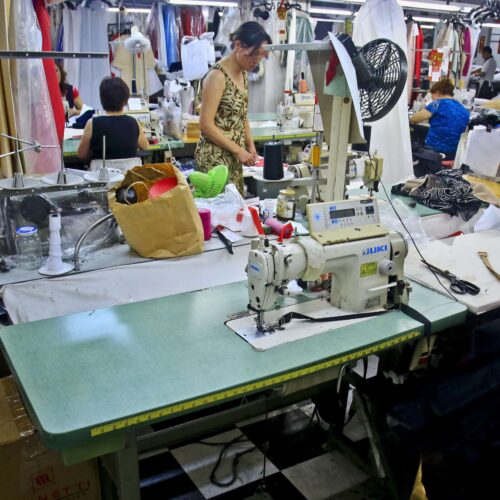Introduction
Los Angeles, California, gave a thumbs up for manufacturers to begin sewing cloth masks as part of its early response to the COVID-19 outbreak. But the garment industry’s sweatshop-like conditions and poor oversight pose an even bigger risk to workers during a global pandemic, reports Alessandra Bergamin for The Lily. In this week’s reporter Q&A, we talk to Bergamin about reporting on the experiences of garment workers — many of whom are immigrant women who are often undocumented — sewing masks for as little as five dollars an hour.
How did you get the story? What led you to pursue it?
In mid-March, as more and more countries were sent into lockdown, I began to read about the closure of garment factories across Asia and the millions of workers that were being laid off. While Los Angeles and Dhaka, the site of the 2013 garment factory collapse at Rana Plaza, are some 8,000 miles apart, the garment industry in both places is based upon sweatshop-like conditions, sub-contracting, poor oversight and the labor of migrant workers. At the time, I hadn’t read much about the impact of COVID-19 on garment workers in Los Angeles but had a sense that closures and layoffs were also happening here.
Around the same time, Los Angeles Mayor Eric Garcetti announced that contracts would be issued to local factories to manufacture masks to address the PPE shortage. I had noticed that masks were suddenly being sold on every second street corner and wondered where the sudden influx had come from. My original goal for the story was to delve into who exactly had been given city contracts beyond the more vocal ethical clothing brands such as Reformation. I think that the story of Rosa Martinez — a garment worker who graciously shared her experience of having to choose between her health and her livelihood — speaks to some of the larger issues that workers are facing amid the pandemic. Martinez recounted how she had to work seated close to more than 10 other employees without a mask, without gloves and without knowing whether anyone around her was sick during the pandemic.
“What we’ve seen is that the cleanliness and sanitation issues that were present prior to COVID-19 are still not being dealt with, even for mask production,” said Alex Sanchez, a field organizer with the Garment Worker Center.
What were the challenges of reporting and how did you navigate them? Where do you look for inspiration?
I have a strong interest in international reporting (much of which has been put on hold due to the pandemic), so I try to think about the way global stories play out locally. In this case, the Los Angeles garment sector is a microcosm of how the fast fashion industry operates on a global scale. While countries may differ geographically, ethnically and economically, the movement of people through immigration, the globality of supply chains and the role of the internet in spreading ideas means there are potential ways into foreign stories that exist on your doorstep.


Join the conversation
Show Comments